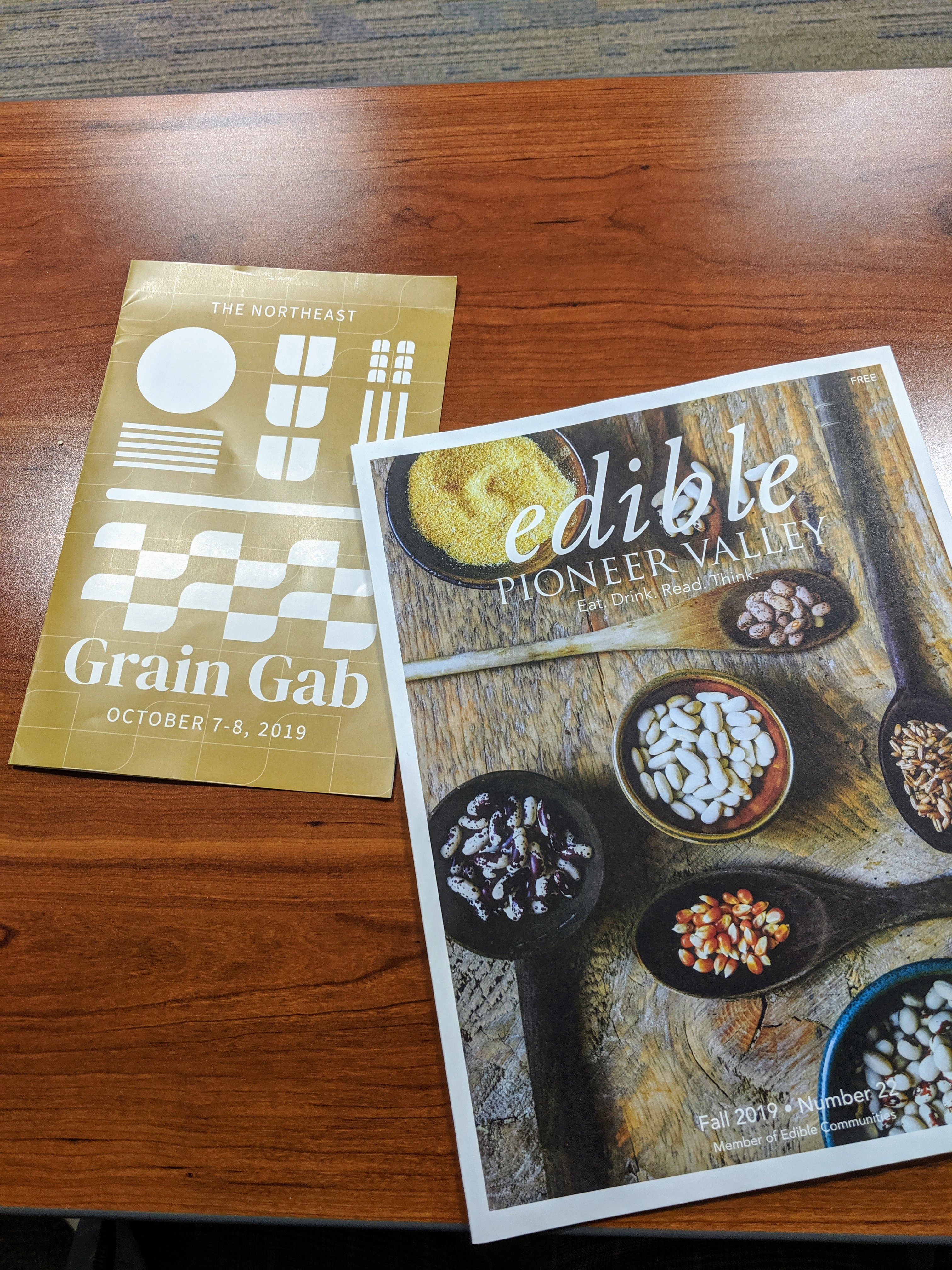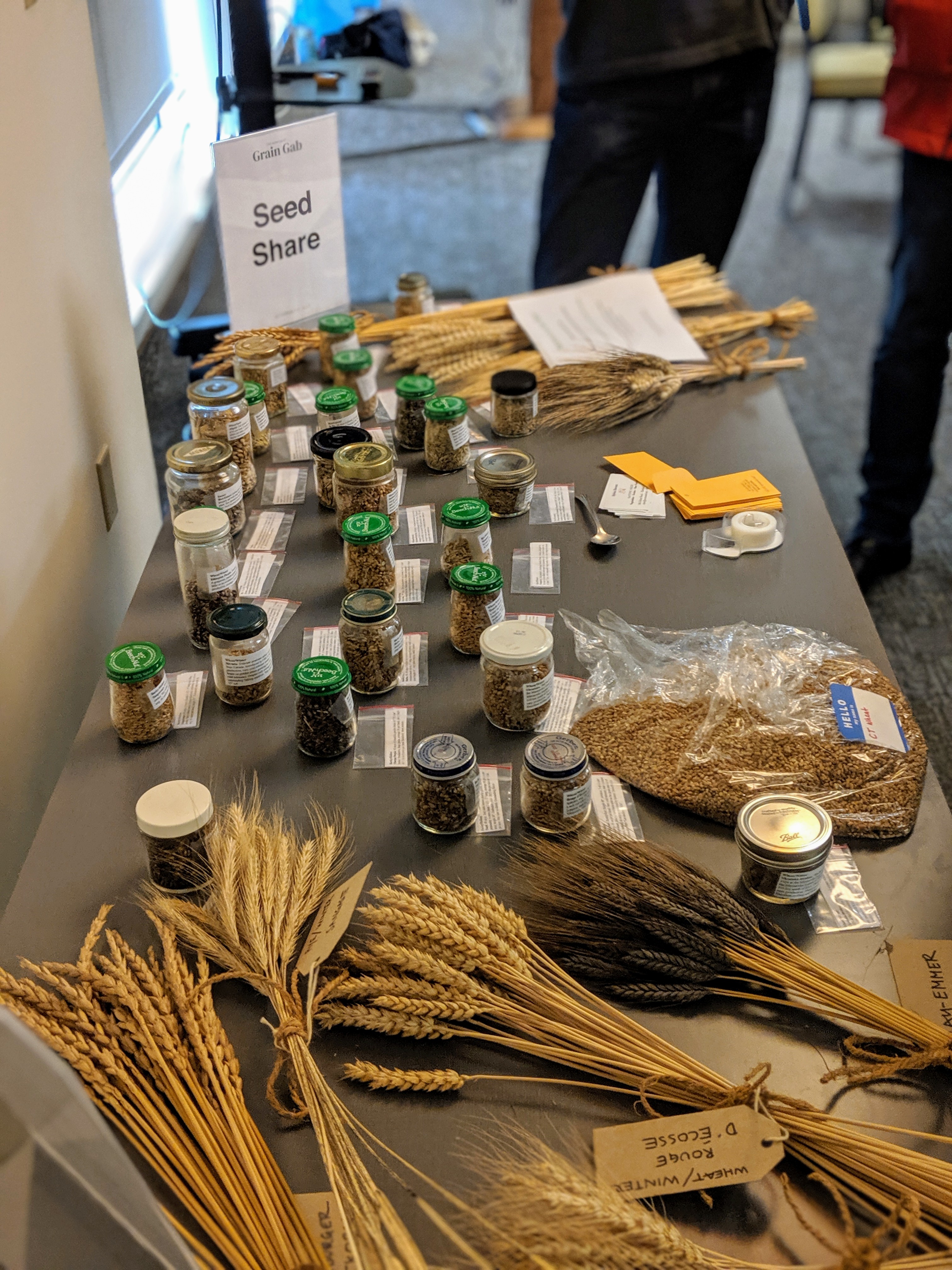Share This
Farmers markets have long showcased local varieties of fruits and vegetables, and slowly but surely, grains are joining in on the fun. Though appearing a bit late to the local food scene, local heirloom grains are making their presence known. From bags of local wheat berries and cornmeal, to pastries made from heritage whole grain flours, local grains are the ingredient that nearly every star chef and baker is trying to get their hands on.
Getting more locally grown whole grains on the table takes more than just growing the grains. To learn firsthand how grain enthusiasts can best support this movement, we joined individuals from all sectors of the Northeastern grain world, from New England to Canada, at The Northeast Grain Gab earlier last month. Organized by the entrepreneurs and Whole Grains Council members at Chabaso Bakery and their affiliate bakeshop Atticus bookstore, this event in New Haven Connecticut fueled a lively discussion on how to ‘connect the dots’ of this burgeoning regional grain economy.
Participants of the Northeast Grain Gab gathered to support each other as an ‘industry cluster’ of sorts. An industry cluster is one where all the participants contribute to, and benefit from, a pool of shared knowledge about their craft. According to Francis Percival, the keynote speaker at the Kneading Conference a few years ago, industry clusters are what makes small-scale economies — such as regional grain production — economically and culturally sustainable. We saw the benefits of the industry cluster the Grain Gab made manifest in real time, especially in regards to one of the defining challenges of regional grain economies across the country: infrastructure.
Many of the infrastructure-related growing pains felt by local whole grain farmers, millers, and bakers have also been reflected in the growth of the local craft beer movement. During the Massachusetts Spotlight presentation, Valley Malt (a malt house in Massachusetts) shared not only their numerous successes, but also how tenuous that success can feel without dependable infrastructure and resources. The momentum for collective action in the malting and brewing space was so strong, that by the end of the conference a new brewing group was announced, dedicated to strengthening the supply of local grains and hops for local New England beer.
Tackling the problem of infrastructure by building it from the ground up, the marketing agency Brightly Creative presented an innovative project taking place in Western New York. This endeavor aims to take advantage of the New York Farm Bill to create an integrated supply chain to serve the increasing demand for local grain and hops in the state. The New York Farm Bill mandates that at least
60% of hops and grains used to brew craft beer must be grown in New York State, increasing to 90% by 2024. Empire State Brands will take the remnants of the declining dairy and concord grape industry in Western New York and build ‘a centralized operations hub’ for grain and hop production, to serve brewers and bakers in the eastern United States, by packaging all facets of infrastructure into one, integrated supplier.
Whether you’re a brewer, a baker, or a whole grain food maker, working collaboratively to identify best practices and innovative solutions can help make it easier for everyone to put more (local) whole grains on more plates. As the presenters for the Vermont Spotlight session observed, there is no reason to climb through the rearview mirror to regional grain economies of the past. They can serve as inspiration, but the future is far more exciting.
Please check out our local grain map to get linked into your regional grain economy. Are we missing something? Let us know! Can’t find a local grain economy contributor near you? Start up a conversation at your local market, brewery, distillery, cafe, bakery or grocery store. Be the first representative of your region’s industry cluster! (Abby)



Comments
Add a Comment